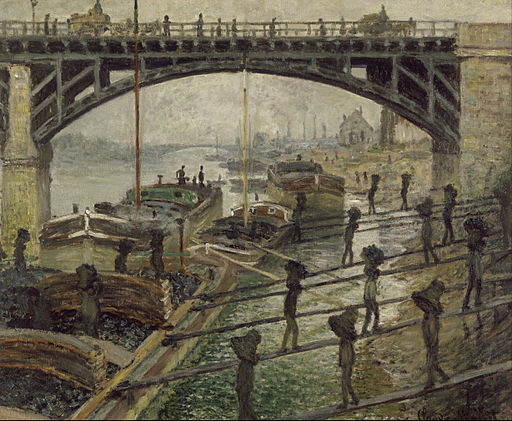Many of our modern cultural ideas come from the Victorians, so what can they teach us about our relationship to technology and its impact on the environment? From the normalization of throw-away culture, to the environmental dangers of technological hysteria, it turns out, quite a bit.
Last year, the Cambridge researcher Amy Orben, released a narrative review of social media research. Her findings suggest that, from what we currently know, the negative impact of digital technology on teenagers is either negligible or not causally established, and that much research in this area is of surprisingly low quality. Emerging research suggests that we have grossly mis-appraised the result of new social media technologies on our lives. Orben’s work joins a growing number of studies that suggest pathologizing everyday digital age behaviors has been a counterproductive exercise: one fraught with unreliable research, emotional approaches, and hysterical media frenzy. Worse, our focus on these emotive and divisive debates has proved to be an enormous distraction from the very real environmental consequences of our technological world.
Most people have heard of terms like “social media addiction”, “gaming disorder” or “digital detox”: terms that are deeply unhelpful and not substantiated by scientific data. Far fewer people are aware that “ICT’s carbon footprint is on a par with the aviation industry’s emissions from fuel”, that online video generates 300 million tons of CO2 per year, or that by 2040, mobile phones and data centers will be some of the world’s biggest polluters. As it turns out, the “Information and Communication Industry has received little attention as a significant contributor to greenhouse gas emissions”. So why have we ignored one very real threat, in favour of focusing on another that is not supported by scientific evidence?
There’s a Victorian age parallel to be made here. Perhaps unsurprisingly, given that many of our current cultural norms in Western English-speaking countries were formulated during that period.
For instance, every Victorian knew, thanks to extensive coverage by the press of their time, about the dangers of railroad spine! This was an illness so dreadful its symptoms could manifest in any number of ways: ranging from anxious or behavioural complaints, to a variety of physical symptoms. Initially, the condition was a product of accidents suffered in early railway collisions (either from physical damage, or from what might now be described as PTSD). But, soon, the condition took on its own mysterious abilities! For instance, there was real concern that when a train reached 50 mph uteruses would fly out of women’s bodies, or that humans could melt!
In hindsight, it seems easy to see that the real culprit explaining many symptoms, was hysteria: terror at new technological developments during the industrial revolution, and the changes these brought into people’s lives. But, while the public panicked about the unknown consequences of new technology, which they pathologized with verve, few considered the real dangers that actually faced them as black billows of smoke poured from train engines polluting the landscape and air. Nor did they fully realise the extent of the environmental impact that the accompanying infrastructure and construction had on their world.
The hysteria over the development of the railroad highlights how the fear of change gave way to public drives to demonize new technology as unsafe to health, in ways that were almost entirely unfounded. And, while often well-intentioned, they served as a distraction from more pressing environmental concerns with even greater consequences for public health. The environmental impact of the Industrial Revolution in Britain went largely unchecked until the institution of the UK Clean Air Act in 1956– over 100 years after the railroad had become popular transport.
We must take heed of this lesson. If the environmental consequences of our own daily digital lives were given the same press as our hysteria-led pathologizing about digital detox, we might be able to avoid the century long wait to take action on a crisis that we cannot afford to delay.
But perhaps the lens of Victorian history can also provide insight into our cavalier attitudes toward pollution. For instance, it is the Victorian shift from the traditional life of making things at home, to the convenience of buying in products ready-made that gives rise to our modern normalization of the landfill.
Cultivating an emotional connection with consumers that focused on inspiring brand loyalty, Victorian-age businesses developed new marketing practices, including disposable branded packaging (a concept still popular today). These were temporary items that helped businesses develop a trusted identity with consumers. They also created large quantities of waste. But as the researcher Tom Licence who studies Victorian garbage, tells us “we are not hard-wired to create so much garbage”. This may be true, but we have certainly normalized it.
This throwaway concept has infiltrated most corners of today’s market, with temporary items that are fashionable in the moment, more salable than quality and durability. Whether it’s fast fashion, or the newest model of iPhone, our emotional drive to give ourselves that fashionable edge creates a massive strain on our environment. The Victorians enjoyed the convenience their new purchases added to their lives but failed to consider the enormous environmental consequences of that convenience. In just the same way, our drive for convenience in our digital age often beckons us to turn a blind eye to the carbon footprint we create every time we stream video or purchase the latest model phone. Technology use has environmental impact, and we must insist that services and technologies are improved to make them as green as possible.
But surely, won’t our increasing awareness of the environmental consequences of our actions now lead us to make better choices? In this too, the Victorians provide us with a valuable lesson. It may seem odd, but the wall décor of Victorian homes reminds us of the ways in which environmental science can find itself undermined by fiscal interest and misinformation. In this regard, the work of William Morris serves as a fascinating and pertinent example.
Morris, was an accomplished pre-Raphaelite artist, and an aesthete: a movement that raged against the industrialist machine of mass-production that they felt was destructive to the natural world, and social well-being. Yet, while vocally observing its failings, Morris actively courted this industrial machine, too.
A popular maker of wallpapers, Morris developed prints that reflected the importance of the natural world, often featuring plants, and favored the use of a color called Scheele green: a shade that become fashionable in many Victorian homes and contained high levels of arsenic mixed with copper. Unsurprisingly, this turned out to be highly dangerous to the environment, and public health. The evidence seemed clear, and in Europe, such arsenic wallpapers were banned. But not in Great Britain. In Britain, Morris argued the idea that such wallpapers were damaging was nonsense, and that clearly doctors had been “bitten by witch fever”. (It is worth noting that for a time, Morris had been a shareholder, and director, of his father’s copper mines- the largest arsenic producer of the age.) Convoluted by misinformation and fighting an uphill battle against Morris’ fame and the wallpaper’s popularity, the position of science became compromised. A situation with which we can readily identify in today’s digital world. The confusion meant that the wallpaper continued to be used; while people continued to die of suspected arsenic poisoning, and pollution increased. Misinformation, coupled with Morris’ celebrity (celebrity that seemed to hold more weight than the opinions of qualified physicians) created a delay in action that proved costly, though eventually, the wallpaper producers themselves changed Morris’ product.
There’s an important lesson in all three of these examples: the hysteria of railroad spine; the refusal to face the impact of our throwaway behaviours; and the manipulation of public opinion through celebrity and misinformation that undermines science. The environmental devastation, and public health crises, that arose were almost wholly ignored in favor of distracting emotive arguments capturing the popular sentiment. Be it through hysteria, fashion, or celebrity and disinformation, scientific facts and a constructive discourse to improve technology’s function for a greener world were side-lined by popular beliefs, which proved difficult to shift. A similarity between the tactics we use today when we discuss new technology or scientific development in terms of how we “feel”, as opposed to engaging in the sort of fact driven discussions that would help us identify and address genuine problems, can easily lead us down a dangerous path in which we turn a blind eye to critical environmental issues. For the Victorians these mistakes led to costly, and deadly, consequences. In a world where the environmental stakes have reached a critical point, we can no longer delay, and must act with scientific objectivity to secure a better environmental future.
Image by Claude Monet, “The Coalmen”, Public domain via Wikimedia Commons


